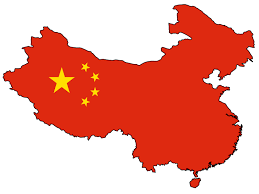Where do innovations come from? Where do ideas come from? Nowadays, Chinese firms always are good examples for the developments of economic. China always has different cases from West or United State. In our opinion, Chinese economic grows up with imitating, but not innovation. China is largely land of rule bound rote learners – a place where R&D is diligently pursued but breakthroughs are rare. There are many reasons to prove our opinions. Almost Chinese start-ups are not founded by designer or artist, but by engineers who do not have the creativity to think of new ideas or designs. It can be seen that Chinese Government control the firms with “socialism with Chinese characteristics”. Only Chinese has really low protection for the intellectual property rights. It is very easy for Chinese to imitate other productions. It reduces the level of innovation. Furthermore, Chinese education systems also strongly affect to the way employees work. How can students so completely focused on “Chinese’s examination hell” possibly be innovators?
However, one member debated that China has no lack of entrepreneurs or market demand. China has the potential to set the kind of economic policies and build the kind of education and research institutions that propelled the U.S. to technologies. It can be seen from the top down and from the bottom up. Chinese Government takes the Top, and has made the “Medium to Long Term Plan for the Development of Science and Technology”. It was proven by Beijing, where has a solid track record of setting policies and incentives, from government offices to villages. Government also used funds and political will to stimulate innovation from the top. The National Science Foundation and the State Key Laboratory program were created. The wind turbine industry is an example of the effects of policies on innovation industries. Government also tried to change Chine from the imported technologies to exported nation in many aspects such as biotechnology, energy-efficient technologies, equipment manufacturing, information, and advanced materials.
In contracts, innovation from Bottom Up is focused on Chinese firms and employees. Against the government’s intentions and national resources run powerful currents that originate in China’s Communist system and ancient culture. Firms tried to learn from outside of China. For example, Tian was seen by many China Telecom employees as an American outsider trying to reform a state-owned enterprise in unacceptable ways. At the governance structure of firms, Communist Party plays an important role in research institutes or colleges in China. The Communist Party requires a representative to be present in every company with more than 50 employees. Every firm with more than 100 employees must have a party cell, whose leader reports directly to the party in the municipality or province. These requirements compromise the proprietary nature or a firm’s strategic direction, operations, and competitive advantages, thus constraining normal competitive behavior.
In order to support for local firms’ innovation, Chinese Government has preferred the acquisition for overseas firms rather than the alliances or rent. Tired of paying licensing fees and royalties, Chines firms have increasingly, and with their government’s encouragements, sought to buy, rather than rent or steal. Machinery manufacture Sany attempted to success in the European and U.S. markets by relying on homegrown talent and technology. And Sany’s 2012 acquisition of Putzmeister, Germany’s leading cement pump maker, gave the company access to a onetime competitor’s technology.
In conclusion, we can see that Chinese firms making a concerted and effective effort to fill major gaps in their innovation capacity through increasingly widespread foreign acquisitions and partnerships. To become a leading force for innovation in the 21st century, the Chinese universities need to be nurturing the innovators for future. There are many positive opinions about Chinese innovation in the future, such as private colleges and universities, but our answer is no. The Governance structures of China universities still leave too many decisions to too few, too self-important, people. The political world in Chinese universities and business need to operate and change to be more freedom, to pursue ideas.

